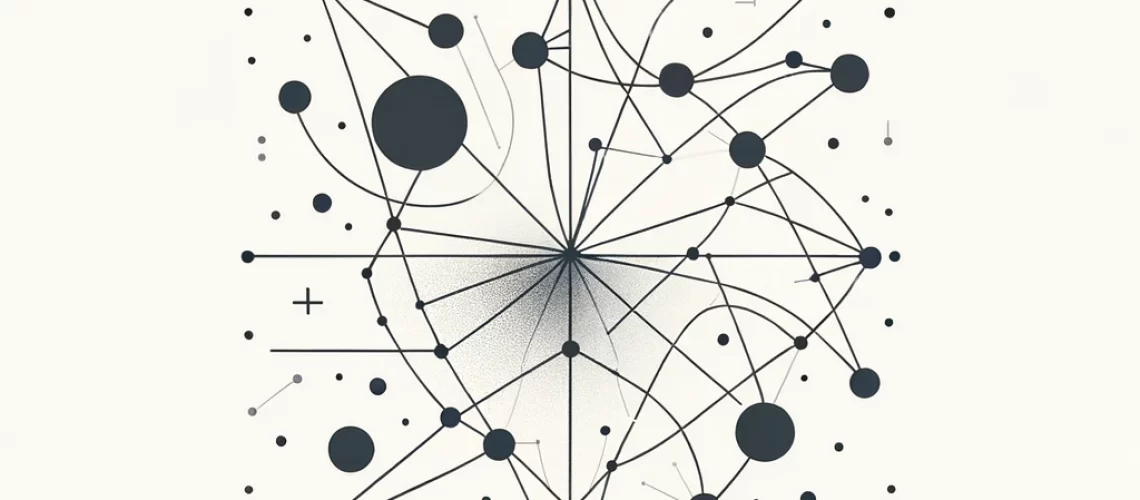Over the past four years, the Vagus Nerve, the Polyvagal Theory (PVT), and the regulation of the nervous system have flooded social media posts and media outlets in the French-speaking world. While the subject is not new (Stephen Porges 2014), the post-COVID era has spotlighted our mental health and nervous balance.
Let’s rejoice! Porges’ model, popularized by his collaborator Deb Dana, allows us to better understand our inner reality, “our states.” Armed with this deeper self-awareness, we can then consciously decide to transform (or not…) what does not contribute to our balance, to our well-being. Enduring life or Choosing how to live it!
The Polyvagal Theory is not a therapeutic protocol to follow or a magical potion to manifest our superpowers. It is a framework for understanding what happens inside us in the face of life’s ups and downs. And therein lies its power: it adapts to everyone regardless of the domain that challenges us (romantic, friendly, familial, business).
Understanding and especially its daily practice have literally changed my entire life. Before knowing it, like everyone else, I had perceived that stress had an impact on my health, my sleep, my appetite… Like many, I had already turned to sports, a quest for balanced nutrition, a more spiritual quest to answer my numerous whys…
All these “solutions” proved useful and allowed me to explore my relationship with my physical body, my emotions, my beliefs, and my moods! But still, some whys and hows remained unanswered…
What I understood from the PVT and why it changed my life!
Faced with an external event, my body through its sensors already perceives whether the event in question falls into the category of “safety” or “danger.” Then come sensations, emotions, feelings, and thoughts. Pause. If you are like me, you may not necessarily be aware of what is happening in your body. You may not necessarily have access to your physical sensations when they occur (especially if the perception is that of danger).
For those who have experienced traumas, especially in early childhood, one of our protective mechanisms inherent in our nervous system is to disconnect from our feelings. We talk about dissociation and trauma when, as Dr. AImie says: I feel too much too fast (I am overwhelmed) or not enough for too long.
In these two cases, my nervous system protects me by disconnecting me from my feelings. Either I will be “frozen” (stuck) or I will be avoidant (in denial of reality). And of course, when I am in denial, I am not aware of it (are you following me?)
So I come back to my circuit: sensations, emotions, feelings, and thoughts, as mentioned above. If I am disconnected from my feelings, I can be trapped for a long time in experiencing my states without even realizing it. I loop back on what I know because it is my “default” mode of operation. Like on a form where I don’t know I can make another choice.
Here, I think of my clients who tell me that they have always been anxious, or depressed like their mother, or overweight like all the women in the family; or even those who explain their warrior side, amazon, who rushes, never stopping and tasting burn-out in the end. In short, those who label themselves “not enough, make efforts, be strong”…
If I am a social being, made for connection (thanks to my vagus nerve), and if my nervous system is the guarantor of my survival, then everything that happens to me is filtered, interpreted by my nervous system in light of this logic of survival. If the events that have marked my life (starting with my birth: see Arouna Lipschitz) were initially perceived by my system as dangerous or even terrifying, I am the bearer of this imprint that shapes and colors what I will call my identity, my self. And I am often, for a long time, identified with this self.
The PVT allows me to become aware of this mechanism to stop enduring it. I keep my SN and my vagus nerve. On the other hand, if I don’t feel my body (and you understood that following traumas, it’s normal, it’s a logical biological survival response), I can observe my thoughts! You know, the voice I hear in my head (the one that comments, that tells me what to do or not, the one we try to calm down when we meditate, for example…)
Starting by observing my thoughts already allows me not to identify with them. And consequently, to know what my inner state of response to my current environment is. Maybe I am not able to feel it, but I am able to identify it thanks to what I hear myself thinking. And here I regain my power to choose what I will do with it!
The PVT allows me to understand if I am enduring (frozen, fighting, fleeing) a situation without being aware of it. Have you ever normalized something that might have upset you beforehand? (it’s not serious, he/she didn’t mean it; he/she is tired…).
Here it is my head that has taken over what I struggle to feel because if I went all the way, I would have to express an emotion, a need… which could trigger a discussion or an exchange that I apprehend so I prefer to say that it is not serious, not important… without being aware that my body is going through a stress response with its consequences on my physical, emotional, mental, and spiritual health.
I am a champion of denial. I remained identified with my hurts, with my story for a long time. Thanks to the #metoo era, tongues are loosened and words deliver the pains. To heal our “traumatized Selves,” the PVT is a fantastic tool because it is simple and effective. Not easy, though!
If you are still here, hello, I am Sandrine, and I accompany you in the daily practice of the PVT. I use nutrition as a pretext to help you observe your inner states. I have dubbed myself Miss 3P: practice, patience, and perseverance. I will explain more in the next episode!
So, is the Polyvagal Theory just a passing trend? No, I don’t think so! If you use it, you know how much this tool changes your entire inner/outer perception of yourself and the world around you! Yes, many of us are talking about it more and more because once out of denial, there is no going back. On the contrary! The PVT opens a boulevard to consciously reconnect to our joy of living and to co-create a peaceful world


